|
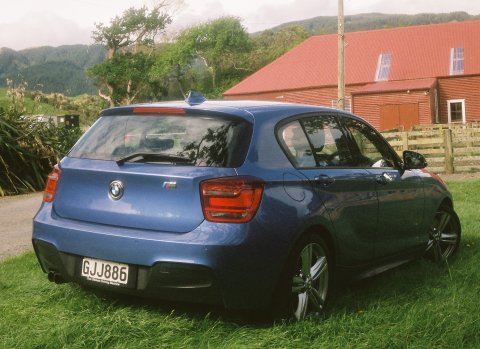
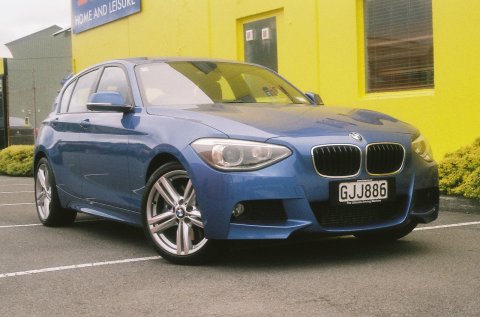
Evolutionary From the rear, the new F20 is similar to the E87; front recalls 2000 CS
When we tested the original BMW Einser, there was a wide gulf between the sensible 118d, a frugal hatchback with one of the company’s first production stop–start systems, and the 135i Coupé, a two-door coupé that recalled the glory days of the 2002 Tii. We loved the latter as we raced it up Wainuiomata Hill Road (at the legal limit, of course), and the grip from the tyres—it had more raw power than our favourite in the class at the time, the Audi S3, and even if it looked a little upright (it recalled the 2002 Tii in more ways than one), it was an endearing car that almost tipped us in favour of the Bavarians.
There were a few things that kept us from loving the Einser, chief among which was the styling. The BMW cues were all there, but the “flame surfacing”, which worked well to give sporting models such as the Z4 some panache, sat awkwardly, particularly with the hatchback. The concave sides reminded us more of the Renault 14 than an upscale German brand, and it didn’t help that the more basic of the two cars was, well, basic. It took the two-door coupé to solve some of those problems, but when a 1970s 3-series looked sleeker, it would take more than 300 PS to make us fall in love with the car.
But from a practical point-of-view, the Einser was fine. Some people said that the rear-wheel-drive transmission robbed the car of usable boot space, but for us, on a daily basis, it was never an issue. Rear-seat accommodation was good enough, and for those contemplating an alternative to the Golf or the A3, and especially for those loyal to the Bavarian marque, the Einser made do.
So what its replacement really needed was nicer, sleeker styling, and better interior materials. If the rest of the car could be improved, for instance, the dynamics, which were very good to begin with, then that was just be the icing on the cake.
But the landscape hasn’t stood still for BMW. Audi has a new A3, due to arrive on our shores in the New Year. Mercedes-Benz has reimagined its A-Klasse to get in on the compact market. Look at both these cars and what is noticeable is how much more aggressive they are compared to their predecessors. They are wider, sharper and probably intentionally sporting in nature, because they see just how BMW has been able to get a decent share of the market over the traditional hatchbacks from Volkswagen, Ford, Peugeot, Renault and the like. There’s also a bit of psychology involved: people want performance from their cars, and with fuel prices continuing to rise, why not build in a little bit of aggression into the C-segment? You aren’t exactly tearing up the strips of Detroit between traffic lights in Hemis and Cobra Jets, but there’s a bit of that thinking involved here—as long as it’s done in a sensible way where you are carrying five passengers, keeping carbon emissions low, and delivering great fuel economy. Quite a tall order.
The evolution of the BMW is what you’d expect and Lucire’s test car is an interesting choice. The 125i Sportline with the M Sport pack, sits in between the two Einsers we had to test in previous years. Looking at the outside, you either accept it or hate it, but it’s hard to say that it’s a shape anyone will love. The frontal treatment has a hint of the shark nose that we liked on the 6-series, but the interpretation isn’t the finest. If anything, it recalls BMW’s awkward 2000 C and CS coupés of 1965, which didn’t come of age till a 1968 facelift.
We see a bit more of the flame surfacing, but overall, the car is sleeker—in fact, to follow the old Harley Earl principles, longer, lower, wider. The wheelbase is longer as well, and the overall styling has improved as a result.
Inside, the Einser also fulfils its brief in being much more comfortable than its predecessor, with nicer materials; the binnacle is angled neatly toward the driver with clear instrumentation within, while the blue strip on the passenger side recalls the exterior colour (though it might not be to everyone’s tastes).
It is what you might have expected the second-generation 1-series to look like, and this is where Mercedes-Benz might have been able to trump its competitor. BMWs can be evolutionary, and this is no exception. Mercedes-Benz, in an about-turn from its original, clever A-Klasse, knew what the stylistic benchmark was.
But let us not speculate on a car that hasn’t arrived in New Zealand yet: we’re here to test just how good the 125i is. Tom Hill at Jeff Gray BMW was insistent that the 125i is a hot hatch, and it nearly looks the part: the Motorsport badge, the sport suspension, the aerodynamics, the brake package—the extras in this one, which include seat heating, park assistant (though without the clever three-dimensional pictures of more upmarket BMWs), and the professional-level sat-nav, totalled NZ$11,600 (bringing the full total to NZ$76,300). It’s a lovely place to be, but it might be fairer to describe the 125i, even with the M pack, as a warm hatch, despite the 218 PS (160 kW) and 310 Nm. The body kit does something for it, but it doesn’t scream ‘hot’ to us;
Dynamically, it is the best in the class based on what we have driven. It’s quiet, it grips, and it handles well, but for it to be a hot hatch, you need to be able to fling it along the winding roads joyfully, and not feel any of the car’s bulk. Unlike the 135i, the 125i needs a smidge more power to reach those giddy levels of enjoyment—but it is not to say that it isn’t enjoyable. As a car that has to do everything—perform, seat five, carry the shopping, and be nice to the environment—the 125i actually excels. We did do a shopping test and it accommodated our week’s groceries capably; in terms of everyday usage, there isn’t any issue with practicality. It is even nice to the planet, with the eight-speed automatic transmission switching to Eco Pro mode well and giving us a 10 extra kilometres thanks to careful driving on one section of the test. (However, as we found out, if you are running nearly on empty, those 10 km vanish very quickly.)
Looking through the transmission modes, however, there isn’t as much between them as one might think, hence the warm hatch moniker from us.
BMW claims a combined fuel consumption of 42·8 mpg Imperial (6·6 l/100 km); we managed to achieve—again noting that we can be harsher in our testing—36·3 mpg (7·8 l/100 km), which is not bad, when you consider in the same test, the BMW 320d got us 43·9 mpg (6·4 l/100 km). That might also mean we didn’t quite get to the 154 g/km of carbon dioxide emissions that BMW cites, so we weren’t as nice to the environment as we would like.
We know that it’s hard coming up with a car that does everything, but BMW might have succeeded on that front—even if the plan was to create a five-door hot hatch. It’s for those who need a family hatchback that delivers enjoyment and practicality, even if its improved styling is a tad fussy. It will appeal to those who don’t care what others think about the fussiness: the 125i buyer is someone who cares about the overall enjoyment of driving, which is, at the end of the day, what the company likes to be known for. •
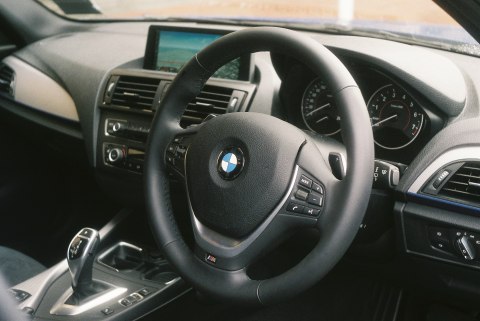 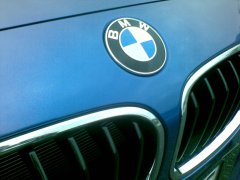 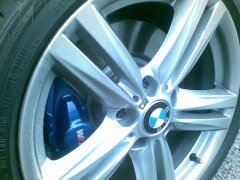
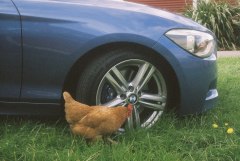 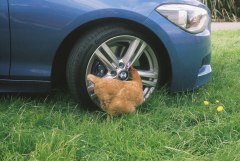
Curious Chicks dig the alloy wheels
|
 |
You aren’t exactly tearing up the strips of Detroit between traffic lights in Hemis and Cobra Jets, but there’s a bit of that thinking involved here—as long as it’s done in a sensible way where you are carrying five passengers, keeping carbon emissions low, and delivering great fuel economy
Jack Yan is publisher of Lucire.
| Related articles |
 |
Sporting life
Jack Yan tests the BMW 320d Efficient Dynamics Sport Line, and finds that the Bavarians have managed to stay on top of the game, while making their latest model relevant to the 2010s
photographed by the author on a Voigtländer Bessamatic Deluxe |
 |
The spirit of 2002
No, not the year: Jack Yan tries to find if any of BMW’s
diesel coupés recapture the essence of the company’s famed
2002 range of the 1970s
photographed by the author and Nigel Dunn |
 |
The sensible choice
Renault’s third-generation Mégane does everything competently—making it the choice for those whose heads rule their hearts, says Jack Yan
photographed by the author
|
|

